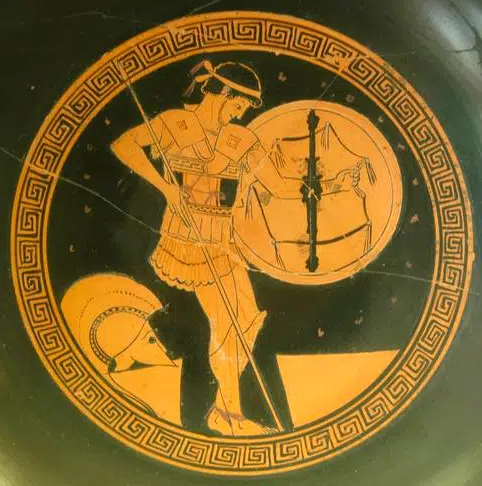
The Battle of Thermopylae, Greece in 480 BC is one of the most famous last stands in history. In the many centuries since the battle, Leonidas and the 300 Spartans have become a symbol of bravery in the face of insurmountable odds.
However, the Spartans did not march to Thermopylae alone, nor indeed were they the only ones to remain at the “Hot Gates” when it became clear that king Xerxes and the Persians would ultimately prevail. The brave Thespians also fought and died at Thermopylae.
Led by Demophilus of Thespiae, 700 Thespians reached Thermopylae, where there is now a monument in their memory next to a statue dedicated to the Spartans. For the Thespians, the price of their defiance at Hot Gates would be a severe one – the destruction of their city no less – but they fought again at Platea.
Ancient Thespiae
Thespiae was an ancient Greek polis (city) in Boeotia, central Greece. The Thespians appear to have held Eros, the god of love, passion, and fertility, in particularly high esteem.
One of the most famous landmarks in the city was a statue of the god created by the famous sculptor Praxiteles of Athens. Prxiteles modeled many of his sculptors on Phyrne, an infamous courtesan from Thespiae. However, the famous statue of Eros would not have been present in the city during the Greco-Persian Wars, as the sculptor was born later in the fourth century BC.
Politically, Thespiae was aligned with the Boeotian League, an alliance of Boeotian city states led by Thebes, which acted as the league’s permanent president. The Boeotians used the same coins and measures to facilitate easier trade and were obliged to aid each other in war, but the league was not an entirely centralized political body, and the individual city states mostly maintained their sovereignty.
The Thespians at Thermopylae
In the summer of 480 BC, King Xerxes I of the Achaemenid Empire (Persia) invaded Greece. His father, Darius the Great, had previously failed to subdue the Greeks after the Athenians had incited the Ionians to revolt against Persian rule in Asia Minor.
The ancient Greeks, who were divided between different polities and fought each other frequently, were able to unite to face this external threat. A combined Greek army led by King Leonidas of Sparta took up a defensive position at the narrow coastal road of Thermopylae to prevent the Persians from advancing further into Greece.
According to sources like Herodotus and Diodorus Siculus, the Greek force numbered anywhere between about 5,200 and 7,700 men, to which the Thespians under the command of Demophilus contributed 700 hoplites.
The Greeks were vastly outnumbered by the Persians, whose total number has been variably given at between 70,000 and a more improbable 300,000. In any case, the narrow geographical features of the battlefield at Thermopylae effectively nullified the Persian numerical advantage and the more heavily armored Greek hoplites held Xerxes at bay for three days of grueling battle.
On the third day of the battle, the Persians discovered a mountain pass that enabled them to circumvent the narrow road and attack the Greeks from behind. When the Greek force learned of this, the majority of them withdrew to fight another day.
However, the 300 Spartans led by Leonidas, the 700 Thespians commanded by Demophilus, and a force of 400 Thebans remained at Thermopylae where they made a final stand.
The remaining Greek force clashed again with the Persians. Herodotus tells us that Leonidas was then slain and an intense battle ensued over his body. The Greeks managed to drive off the Persians four times and retreated to a small hill with the body of the Spartan king.
It was then that the Thebans abandoned the battle, at least according to Herodotus, who may have been biased given their later defection to the Persian side. The remaining Thespians and Spartans remained however and were killed in a hail of Persian arrows.
Aftermath and legacy
Persian retribution was harsh. For their role at Thermopylae, the Thespians were punished by Xerxes with the destruction of their city. The survivors fled south to the Peloponnese.
The Thespians fought again, however. They raised a force of 1,800 men to fight at the Battle of Platea in 479 BC. This time the Greeks were victorious and the Persians were forced to relinquish control of Boeotia and Attica.
That same day, the Greek fleet prevailed at the Battle of Mycale. The Persians’ power in the Aegean had been broken and the Greeks were able to expel them entirely.
In 1997, the Greek government unveiled a monument to the oft-forgotten Thespians at Thermopylae, next to a monument commemorating the Spartan sacrifice there.
See all the latest news from Greece and the world at Greekreporter.com. Contact our newsroom to report an update or send your story, photos and videos. Follow GR on Google News and subscribe here to our daily email!



